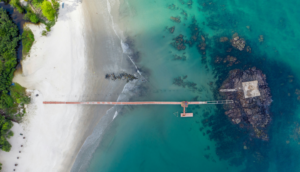The over 22,000 members of this community are here for one thing: Collaborating for Social Impact. Are we ready, willing and able to be open to how to achieve that? Honestly?
Impact, can be defined in many ways and on many levels, in short term, in long term. We can categorize in a multitude of areas. Inherently, we hope, we all want to do good, we all want to align our efforts to create greater change to solve our biggest challenges – creating a long-term positive effect on an individual or groups lives that create a better path forward for their prosperity which may support areas such as poverty, inequality, climate change.
Is your organization giving to create the biggest change and how do you define that? Over the last ten years in working for a large private sector organization, working with global partners and with international organizations I have seen great efforts fall short, and small efforts go the distance. The difference is the alignment and engagement model. Donations of any kind without people engagement to ensure accurate alignment fall short.
I have recently given a short TEDx talk describing a few scenarios of the short and long distances and when looking deeper, creating lasting impact requires three things:
- Does your giving align to your mission and strategy? Your organization ethics and morals should weave throughout your entire business. Building similar metrics and key performance indicators for the impact desired from your giving and does it map to your mission? If you are the maker of sustainable clothing, build a model to teach lower income communities how to use the same model of designing and manufacturing clothing. This, in turn, creates almost longer-term sales engagement, while employing and educating new communities.
- Is there an ecosystem to support your giving? Is the community involved and is there a team to take it further to ensure sustainability? If it’s a cash donation, do we understand financial literacy? The old Chinese Proverb, “You give a poor man a fish and you feed him for a day. You teach him to fish and you give him an occupation that will feed him for a lifetime.” Working with the community to ensure uptake, use and growth from your gift is essential. If you are going to “donate” any item, from cash to hardware, does the community have the mechanisms to manage that donation? Financial management and reporting to see what happens if hardware breaks? How do they dispose of broken hardware? How is it used? There must be planned resources to support the affected people with using the “gift” wisely.
- Are you listening for the true problem to be solved? In traditional private sector approaches to selling, the first rule is the customer is always right. You listen intently to their problems and work with them to find and build the solution. This approach should not be any different when working with developing or emerging areas. Often, the answers lie within the communities but they may lack the vehicle to solve that problem. Listen, listen and then listen again to the community you’re wishing to impact. While visiting and learning about the community in Zaatari, we had a robust group of motivated people asking for help to learn more software skills to better help the community in developing and managing their business. But, we weren’t there to “give” that. Looking back, teaching more on software that would then help each business run more effectively and have a longer-term impact both for the software company and the local economy.
A programme I find incredibly impactful, run by Microsoft, is an internal event called OneWeek. Employees from across the globe come together to form teams to build solutions for the customer or community needs that they are engaged with on a daily basis. Teams are formed, solution prototypes are built and the end results are then given to the customer or community with the advisory services on how to implement. Microsoft creates a cross geographic model for collaboration and innovation, solutions for emerging needs are designed and the end results are verified with the people that they will impact
We have problems to solve, poverty to fight, and a wealth of knowledge, expertise and desire within this community and beyond. Treat your giving with the same rigor as the rest of your business and we will see vast growth, collaboration and success.
Watch Kate Krukiel’s TEDx:










